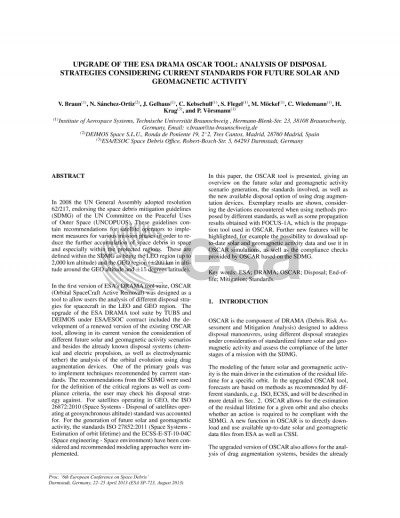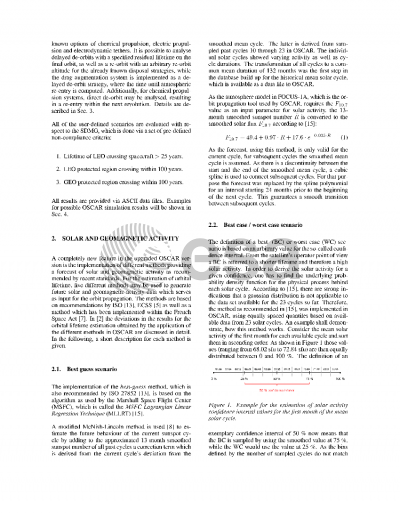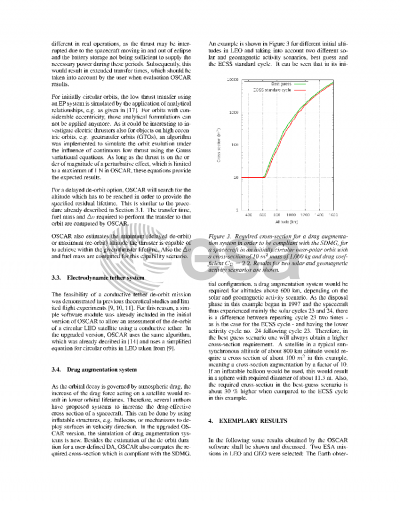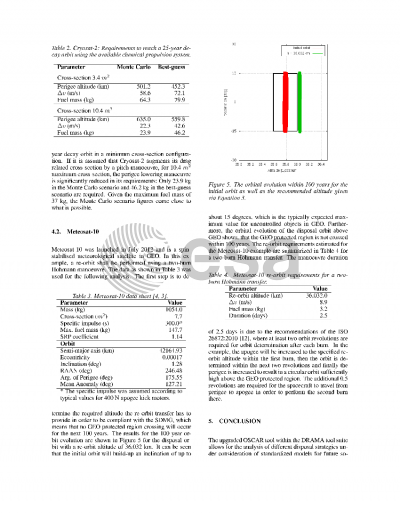Document details

Abstract
In 2008 the UN General Assembly adopted resolution 62/217, endorsing the space debris mitigation guidelines (SDMG) of the UN Committee on the Peaceful Uses of Outer Space (UNCOPUOS). These guidelines contain recommendations for satellite operators to implement measures for various mission phases in order to reduce the further accumulation of space debris in space and especially within the protected regions. These are defined within the SDMG as being the LEO region (up to 2,000 km altitude) and the GEO region (~200 km in altitude around the GEO altitude and ~15 degrees latitude). In the first version of ESA's DRAMA tool suite, OSCAR (Orbital SpaceCraft Active Removal) was designed as a tool to allow users the analysis of different disposal stragies for spacecraft in the LEO and GEO region. The upgrade of the ESA DRAMA tool suite by TUBS and DEIMOS under ESA/ESOC contract included the development of a renewed version of the existing OSCAR tool, allowing in its current version the consideration of different future solar and geomagnetic activity scenarios and besides the already known disposal systems (chemical and electric propulsion, as well as electrodynamic tether) the analysis of the orbital evolution using drag augmentation devices. One of the primary goals was to implement techniques recommended by current standards. The recommendations from the SDMG were used for the definition of the critical regions as well as compliance criteria, the user may check his disposal strategy against. For satellites operating in GEO, the ISO 26872:2010 (Space Systems - Disposal of satellites operating at geosynchronous altitude) standard was accounted for. For the generation of future solar and geomagnetic activity, the standards ISO 27852:2011 (Space Systems -Estimation of orbit lifetime) and the ECSS-E-ST-10-04C (Space engineering - Space environment) have been considered and recommended modeling approaches were implemented. In this paper, the OSCAR tool is presented, giving an overview on the future solar and geomagnetic activity scenario generation, the standards involved, as well as the new available disposal option of using drag augmentation devices. Exemplary results are shown, considering the deviations encountered when using methods proposed by different standards, as well as some propagation results obtained with FOCUS-1A, which is the propagation tool used in OSCAR. Further new features will be highlighted, for example the possibility to download up to-date solar and geomagnetic activity data and use it in OSCAR simulations, as well as the compliance checks provided by OSCAR based on the SDMG.
Preview









